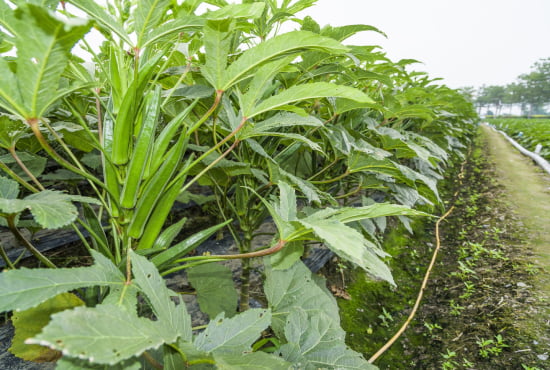Okra, also known as lady's fingers
What are okra pods?

Benefits of okra
This makes it a great choice for those looking to lose weight. Even better? Research published in BMC Complementary and Alternative Medicine found that okra contains glycoproteins that may be able to fight viruses like HIV and herpes. The study notes that further research on eating raw or cooked okra would be necessary before applying these results to humans.

Growing Tips
1. Select a growing site with full sun and fertile soil rich in organic matter. Work in compost or well-rotted manure prior to planting. Space plants 12 to 18 inches apart, in rows 36 to 48 inches apart.
2. Use transplants rather than sowing seeds directly into the garden because they develop a better root system and faster growth that way, both of which are essential for healthy plant production.
3. Amend soil pH levels (using peat moss or ground limestone) and amend with phosphorus if needed.
4. Keep your okra bed evenly moist when plants are small; once mature, okra plants like their roots dry out some between waterings (although it’s not necessary to let them dry completely).
5. Pinch off flowers to encourage more vegetable production: instead of producing seed pods, your plants will send energy into developing more edible fruit instead. You can expect five to 10 weeks’ worth of harvest from each crop.

Cooking with okra pods
While many people know that okra is an edible plant, most don’t realize how versatile it is in cooking. While often used as a thickener for gumbo and stews or fried into fritters like hushpuppies, okra can also be cooked into soups and salads. Stewed until tender or pickled in vinegar with garlic and spices, it takes on a pleasingly slimy texture.
For healthier ways to cook okra pods try grilling them whole with other vegetables or baking them whole (cut sides down) in a 400-degree oven for about 20 minutes. You can even use ground-dried okra pods to spice up your favourite gumbo recipe!
Growing tips for okra plants
Lady Finger or Ladies’ Fingers, Okra plants (Abelmoschus esculentus) require a long season for fruiting and should be started indoors 6-8 weeks before the last frost date. Sow seeds 1/4 inch deep in well-drained seed starting mix. Grow in full sun.
Sow three seeds per cell 1⁄2 inch apart and thin to one plant per cell after germination. Once true leaves appear use bottom heat if available to increase germination rates. Keep soil temperature 75-85 degrees until germination. We recommend growing lights or indoor greenhouse locations with supplemental lighting during the early stages of growth when natural light is insufficient. Transplant into a garden at least 14 days after the last frost once night temperatures remain above 50 degrees minimum.

